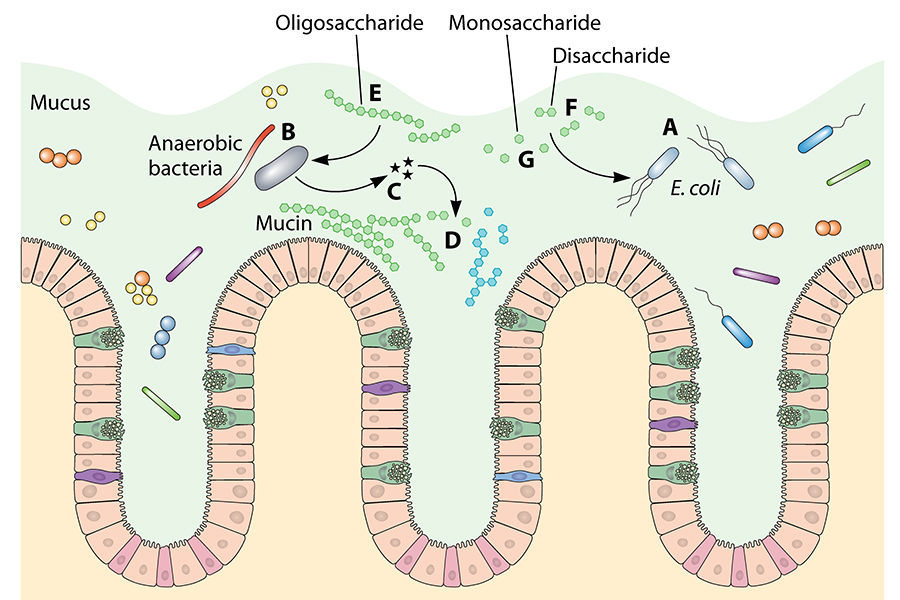Dr. Conway's Lab
We study the physiological state of colonized bacteria in the mammalian large intestine. With NIH funding we characterize the symbiotic relationship between E. coli and anaerobes that degrade complex polysaccharides, which in turn release simple sugars to cross-feed E. coli. The major goal of this project is to determine mechanisms of nutrient competition between E. coli strains in a mouse model of intestinal colonization. In addition, we develop intuitive displays and computational environments for functional genomics data analysis. Please note, in order to focus on the Oklahoma Center for Microbiome Research, Dr. Conway is no longer accepting graduate students.

